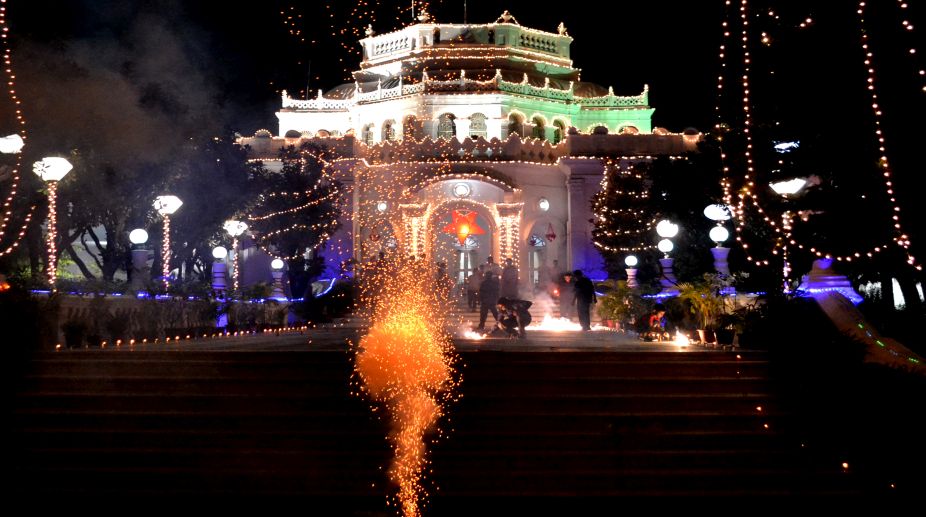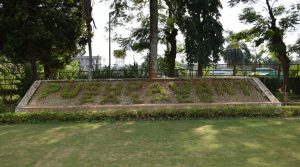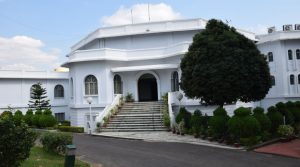A vote for BJP will ensure Tripura’s prosperity: PM to Agartala electorate
Modi claimed that the North East policy of the Congress and the Communists was a Loot East policy, which the BJP buried 10 years back and initiated an Act East Policy.
The Raj Bhavan shifted to a newly constructed sprawling mansion at the new capital complex on the outskirts of Agartala.

The Tripura Raj Bhavan building. (Photo: tripura.gov.in)
The 101-year-old “Pushpavant Palace”, until Wednesday the Tripura Raj Bhavan (Governor’s house), would turn into a museum and research centre dedicated to Nobel laureate poet Rabindranath Tagore, officials said.
The Tripura Raj Bhavan on Wednesday shifted to a newly constructed sprawling mansion at the new capital complex on the outskirts of Agartala.
Tripura Governor Tathagata Roy inaugurated the new Raj Bhavan building in the presence of Chief Minister Biplab Kumar Deb, his council of ministers and a host of dignitaries.
Advertisement
“The previous Left Front government had decided to turn the 101-year-old ‘Pushpavant Palace’ into a museum and research centre dedicated to legendary poet Rabindranath Tagore. The incumbent Bharatiya Janata Party (BJP) government decided to maintain that decision,” the Governor’s secretary Samarjit Bhowmik told IANS.
He said: “The small, but beautiful, ‘Pushpavant Palace’ was constructed in 1917 by then Maharaja Birendra Kishore Manikya (1909-1923). The palace was made Raj Bhavan after erstwhile princely state Tripura merged with the Indian union in October 1949.”

“Tagore came to Tripura last on February 22, 1926, and stayed in the ‘Pushpavant Palace’ for the first time. He wrote many poems and songs during his stay at the palace. The poet came to Tripura as many as seven times, 1926 being the last visit, during the reign of then King Maharaja Bir Bikram Kishore Manikya.”
Tripura’s 16 governors stayed in the “Pushpavant Palace”, situated at Kunjaban with a total area of 1.76 hectares (4.34 acre) of land.
Bhowmik said that the new Tripura Raj Bhavan, which is earthquake proof, has been constructed on nine acres of land in the new capital complex at a cost of Rs 34 crore.
The civil secretariat — the headquarters of the Tripura administration since 1838 when the then king made Agartala his capital and even after the princely state’s accession to India — had been shifted to the newly constructed complex in the new capital complex in September 2009.

In July 2011, the Tripura Assembly also shifted to the new huge building from the Ujjayanta Palace, built by then king Maharaja Radha Kishore Manikya in 1901 in Agartala and which was the headquarters of the royal administrations until the state merged with the Indian union on October 15, 1949 after the end of several hundred years of rule by 184 kings.
“With the shift of all the three important establishments – civil secretariat, assembly house and Raj Bhavan – to new locations, the new capital complex has virtually turned into the administrative hub of the northeastern state,” writer and former bureaucrat Subhash Das told IANS.
While addressing the inaugural function Chief Minister Biplab Kumar Deb said that as the Raj Bhavan and the Civil Secretariat were situated in close proximity it would help the state administration to undertake all round development of the state.
“The new BJP government has undertaken an ambitious plan to make Tripura a model state in the country within three years. The council of Ministers are working hard in this direction,” Deb said.
Advertisement